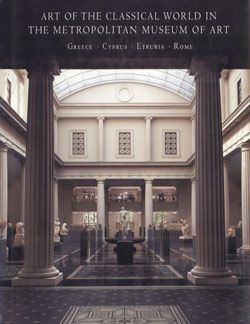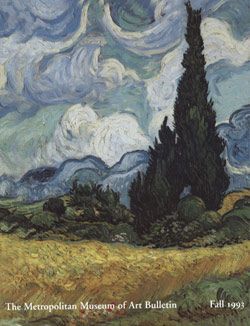Marble head of a deity wearing a Dionysiac fillet
The carving techniques and finishes of the white marble enhanced the applied color. Finished with a rasp, or file, the fillet and hair have a rough surface that helped pigment and gilding adhere. In the hair, yellow ocher served as a preparatory layer for gold leaf, then red ocher was added to indicate depth and to define individual strands. In contrast, precise carving and fine polishing characterize the face. Red ocher, likely an underpainting, delineates the irises, eyebrows, eyelashes, and mouth. While color was not identified on the flesh, these areas were likely painted as well.
For Roman patrons, the replica of a Greek statue evoked a cultured past. Its opulent appearance, with gilded hair, brilliant polychromy, and gleaming marble, likely references costly chryselephantine (gold and ivory) sculpture used for cult images of gods. Its Dionysian associations with the theater and pleasure would have complemented its Roman setting. Probably displayed in a villa, garden, or bath, the colorful head would have heightened the atmosphere of leisure and entertainment that typified those Roman spaces.
This image cannot be enlarged, viewed at full screen, or downloaded.
This artwork is meant to be viewed from right to left. Scroll left to view more.






